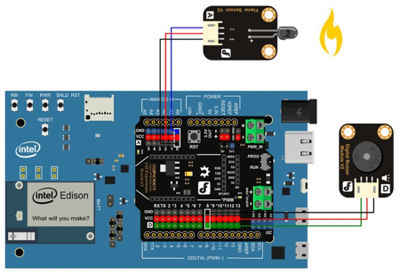Intel® and the National Taiwan Science Education Center are Reaching For The Stars

Learn about the collaboration between Intel® and Professor Jiun-Huei Proty Wui from the National Taiwan University to learn how he is using the Intel® Edison Board and DIY Telescopes to take a peek into the mysteries of the universe.
The combination of the Intel® Edison Board and Do It Yourself (DIY) Telescopes enables makers to take a peek into the mysteries of the universe.
The earliest recorded working telescopes were refracting devices that first appeared in the Netherlands in 1608. The following year, Galileo built his own telescope that improved upon the Dutch design, and in 1668 Isaac Newton built the first practical reflecting telescope, a design that bears his name—the Newtonian reflector.
Viewed from a historical perspective, you could say that Galileo and Newton were in the vanguard of application developers and makers. One can only imagine what innovations they might have been capable of creating had they had access to the incredible hardware, software and other development tools that enable today’s makers to expand the boundaries of the Internet of Things (IoT).
The Dawning of the Age of the DIY Telescope
Thanks to a recent collaboration between Intel and Professor Jiun-Huei Proty Wui from National Taiwan University, homemade DIY Telescopes are continuing along the path that Galileo and Newton forged. Professor Wu has devoted himself to telescope DIY promotion since 2003, and there are more than 500 sets of DIY Telescopes developed every year at the Taiwan International Science Fair. Many of those creators have gone on to become student finalists for the Intel International Science and Engineering Fair (Intel ISEF) over the course of the past decade.
Today, the efforts of Professor Wu and his student contributors have resulted in more than 8,000 self-made telescopes now in existence. And in January of this year, more than 60 science educators from 21 countries gathered in Taipei, Taiwan to take the next step in overturning the traditionally high-cost and complicated astrophotography and photomicrography inherent in the technology into affordable maker projects.
A First for the Intel® Edison Board
As one of the evangelists for the popular science and maker movement, Intel co-operated with Professor Wu for the first time to make another “first” happen—combining the Intel® Edison Board with a DIY Telescope that can be controlled by mobile devices. Instructed by Professor Wu, people at the workshop learned how to build their own maker devices—known broadly under the banner of Protison Maker—for astrophotograpy and photomicrography. Intel volunteers at the workshop provided technical assistance to help make it all happen.
Why Intel® Edison technology? First of all, it’s small. It’s a wirelessly enabled platform that provides low power consumption. It supports a variety of external interfaces. And finally, Intel Edison is a Linux-based platform, paving the way for open source development.
Here’s how it works: Protison combines the Intel® Edison mini board, 3D printing and a webcam to make astrophotography and photomicrography possible through Wi-Fi control by mobile devices or computers. The core of Protison is the Intel® Edison Breakout Board Kit, which is 3.5 cm long and 2.5 cm wide. It contains a processor and memory, operated by homemade software and powered by a commercial battery or any power bank.
When plugged in with a webcam and operated by any mobile device or computer through Wi-Fi, the system can be mounted onto a telescope or a microscope to record images and videos. Users can then easily transfer the resulting media files onto USB drives.
Taking in the View for Future Innovation
There was a tangible sense of excitement among the attendees at the workshop, many of whom were reluctant to leave and stayed after the event to learn more. In fact, the only “lowlight” associated with the event was that there simply wasn’t enough time to sate the technical appetites of those in attendance. Many of the participants left the workshop enthused about the possibility of driving the future adaptation and implementation of DIY Telescope in their own countries.
Equally important, the Intel engineering team on hand collaborated to create a competitive Intel Edison maker manual/SOP (Standard Operating Procedure) to serve as a foundation for future maker DIY Telescope innovations.
And finally, the workshop resulted in the building of a new and strong usage model to employ the Intel Edison board and associated technologies—not only to enable future innovations in the evolving DIY Telescope market, but also to open up new possibilities for Intel Edison and the Intel® Developer’s Kit across the broader scope of the entire field of science.
From Newton to New Horizons
We started this blog with a tip of the hat to Galileo and Isaac Newton—and so we’ll end it with the lyrics culled from an English language nursery rhyme:
“Star light, star bright
The first star I see tonight;
I wish I may, I wish I might,
Have the wish I wish tonight.”
It’s safe to say that, with the help of Intel® Edison technology and a host of enthusiastic application developers, makers will able to view the stars from their own back yards, and realize the dream of having their wishes come true. By any measure, the skies are the limit.




